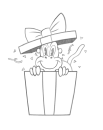$92
$115
You save $23
DOWNLOADS
focus-on-feature-nose-and-cheek.mp4
616 MB
focus-on-feature-nose-and-cheek-transcript-english.txt
20 kB
focus-on-feature-nose-and-cheek-transcript-spanish.txt
22 kB
focus-on-feature-nose-and-cheek-captions-english.srt
33 kB
focus-on-feature-nose-and-cheek-captions-spanish.srt
36 kB
COMMENTS
I'm getting a lot more comfortable with these, the rough head scaffolds are taking me only about 5 minutes each, and the noses are starting to look better and better
